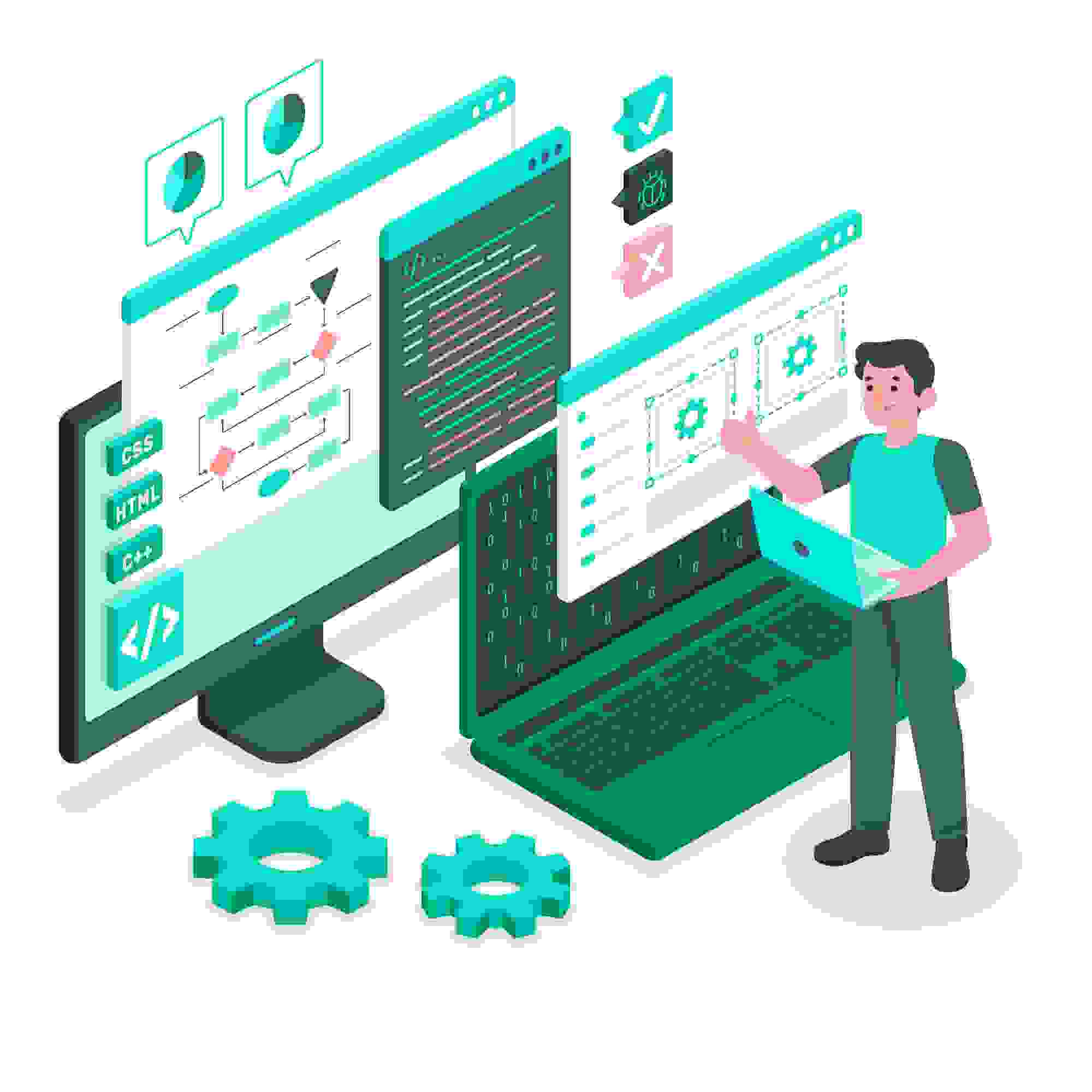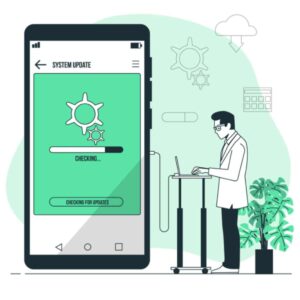In the fast-paced world of software development, ensuring the quality and reliability of your applications is paramount. This is where software testing steps in as an essential practice to identify and rectify defects, ultimately delivering a seamless user experience. In this comprehensive guide to software testing, we will delve into its history, various approaches, levels, types, techniques, the testing process, automated testing, measurement, testing artifacts, certifications, controversies, and its relationships with related processes.
History: Evolution of Software Testing
Software testing has come a long way since the inception of the digital age. Initially, testing was a rudimentary process, primarily focused on detecting syntax errors and ensuring the code ran. However, as software complexity grew, so did the need for more rigorous testing.
One of the pivotal moments in software testing history was the publication of “Software Reliability” by Glenford J. Myers in 1976, which laid the foundation for modern software testing principles. This milestone introduced the concept of systematically identifying and eliminating defects throughout the software development life cycle.
Testing Approach: Methodologies that Drive Quality
In the realm of software testing, different methodologies guide the testing process. These approaches define how and when testing activities are conducted within the development life cycle. Let’s take a closer look at some prominent testing approaches:
Waterfall Model: The Waterfall model, characterized by its linear and sequential nature, involves distinct phases such as requirements, design, implementation, testing, deployment, and maintenance. Testing in the Waterfall model typically occurs towards the end of the cycle. While it offers structured testing, it may lead to delays in identifying and rectifying defects discovered late in the process.
Agile Testing: Agile methodologies, including Scrum and Kanban, emphasize iterative development and close collaboration among cross-functional teams. Agile testing occurs continuously throughout the development process, allowing for quicker defect detection and correction. This approach aligns well with the fast-paced demands of modern software development.
DevOps Testing: DevOps integrates development and operations teams to accelerate software delivery. Testing in DevOps is automated and integrated into the software delivery pipeline, enabling rapid feedback and continuous improvement. It fosters a culture of collaboration, automation, and monitoring.
Testing Levels: Exploring Depth and Scope
Software testing operates at various levels, each with its unique objectives and scope. Understanding these levels is crucial for comprehensive quality assurance. Here are the primary testing levels:
Unit Testing: At the lowest level, unit testing focuses on individual components or functions of the software in isolation. Developers often perform unit testing to verify that each piece of code functions correctly.
Integration Testing: Integration testing assesses the interactions between different components or modules of the software. It ensures that integrated parts work harmoniously as a whole.
System Testing: System testing evaluates the complete software system. It examines the system’s compliance with specified requirements and its overall functionality.
Acceptance Testing: Acceptance testing verifies that the software meets the end-users expectations and requirements. It serves as the final gate before the software’s release.
Unit Testing: Ensuring Component Reliability
Unit testing involves the examination of individual components or units of code. It’s typically carried out by developers during the coding phase. The primary goal is to verify that each unit functions correctly in isolation. This level of testing helps identify and rectify bugs at an early stage, reducing the likelihood of more significant issues later in the development process.
Integration Testing: Bridging the Gaps
Integration testing focuses on verifying the interactions between various components or modules of the software. This level of testing is essential to ensure that integrated parts work harmoniously as a whole. Integration issues, such as data inconsistencies and communication problems, are identified and addressed during this phase.
System Testing: Evaluating the Complete System
System testing takes a holistic approach, evaluating the complete software system against predefined requirements. Test scenarios cover various aspects, including functionality, performance, security, and compatibility. This level of testing is critical to ensure that the software behaves as expected in real-world scenarios.
Acceptance Testing: Meeting User Expectations
Acceptance testing is the final gate before software is released to end-users. It verifies that the software meets the end-users expectations and fulfills specified requirements. This testing phase can be further divided into:
- User Acceptance Testing (UAT): Conducted by end-users or stakeholders, UAT assesses whether the software aligns with their needs and requirements.
- Alpha and Beta Testing: These are often used for software that is not yet ready for full-scale release. Alpha testing is conducted by an internal team, while beta testing involves a select group of external users.
Testing Types, Techniques, and Tactics: Precision in Testing
Software testing encompasses a wide range of types, techniques, and tactics, each tailored to specific testing objectives and scenarios. Let’s explore some of these in detail:
- Functional Testing: This type focuses on verifying that the software functions according to specified requirements. Test cases are designed to assess the functionality of individual features or functions.
- Non-Functional Testing: Non-functional testing evaluates attributes such as performance, scalability, security, and usability. Examples include load testing, security testing, and usability testing.
- Regression Testing: This technique involves retesting areas of the software that have been modified to ensure that new changes haven’t introduced defects in previously working functionality.
- Exploratory Testing: Testers explore the software freely, identifying defects and potential areas of improvement in an unscripted manner.
- White-Box Testing: White-box testing examines the internal structure and logic of the software. Testers need access to the source code for this approach.
- Black-Box Testing: Black-box testing treats the software as a “black box,” testing it solely based on inputs and expected outputs without knowledge of the internal code.
- Boundary Testing: This tactic tests how the software behaves at its boundaries, such as maximum and minimum input values.
- User Interface (UI) Testing: UI testing focuses on the software’s user interface, ensuring it is intuitive, responsive, and visually consistent.
Testing Process: Navigating the Stages
A well-structured testing process is essential for achieving thorough and effective software testing. The testing process typically consists of several stages, and each stage serves a specific purpose:
- Test Planning: This initial stage involves defining the scope, objectives, and strategy of the testing effort. It includes creating a test plan, identifying test cases, and allocating resources.
- Test Design: In this phase, test cases and test scenarios are designed based on the requirements and specifications. It’s crucial to create comprehensive test cases that cover various scenarios and edge cases.
- Test Execution: Testers execute the designed test cases, either manually or through automation tools. During this stage, they record test results, including any defects discovered.
- Defect Reporting: When defects are identified during test execution, they are reported to the development team for resolution. Clear and detailed defect reports help developers understand and address the issues effectively.
- Defect Retesting: After developers fix reported defects, testers retest the affected areas to ensure that the issues have been successfully resolved.
- Regression Testing: As the software evolves, regression ensures that new changes haven’t introduced new defects or affected previously working functionality.
- Test Closure: Once testing is complete, a test summary report is generated, and stakeholders review the results. This stage helps determine whether the software is ready for release.
- Post-Release Monitoring: After the software is deployed, ongoing monitoring and feedback collection help identify any issues that may arise in a live environment.
Automated Testing: Efficiency and Consistency
In today’s fast-paced development landscape, automated testing has become a game-changer. Automated tests are scripts or programs that execute test cases, compare actual outcomes with expected results, and provide instant feedback. Some benefits of automated testing include:
- Speed: Automated tests can run much faster than manual tests, enabling rapid feedback.
- Reusability: Test scripts can be reused across different projects and releases, saving time and effort.
- Consistency: Automated tests ensure that the same test cases are executed in the same way every time, reducing human error.
- Regression Testing: Automated tests are ideal for regression testing, ensuring that new changes don’t break existing functionality.
Measurement in Software Testing: Metrics for Quality Assessment
Effective software testing involves measuring and evaluating various aspects of the testing process. These metrics provide insights into the quality of the software and the efficiency of the testing effort. Common testing metrics include:
- Defect Density: The number of defects per unit of code, often measured per thousand lines of code (KLOC).
- Test Coverage: The percentage of code or requirements covered by test cases.
- Defect Removal Efficiency: The ratio of defects found during testing to those found by customers.
- Test Case Effectiveness: The percentage of test cases that detect defects.
- Test Execution Progress: Tracking the status of test execution, including the number of test cases executed and passed.
- Test Cycle Time: The time it takes to complete a testing cycle, from test planning to closure.
- Testing Cost: The overall cost of the testing effort, including resources, tools, and infrastructure.
Testing Artifacts: Documentation for Clarity
Documentation is a critical aspect of software testing, ensuring clarity, traceability, and effective communication among team members. Some essential testing artifacts include:
- Test Plan: A document that outlines the scope, objectives, resources, and schedule of the testing effort.
- Test Cases: Detailed instructions on how to perform specific tests, including input data, expected results, and execution steps.
- Test Reports: Documentation of test execution results, including defect reports and test case status.
- Traceability Matrix: A matrix that links test cases to requirements, ensuring that all requirements are covered by tests.
Certifications: Elevating Your Testing Expertise
For individuals looking to advance their careers in software testing or demonstrate their expertise, there are several recognized certifications available. These certifications validate your knowledge and skills in various aspects of it. Some notable certifications include:
- ISTQB (International Software Testing Qualifications Board): ISTQB certifications offer a globally recognized standard for professionals, ranging from the Foundation level to advanced levels like Test Manager and Test Automation Engineer.
- ISTQB Agile Tester: Specifically focused on agile testing methodologies, this certification validates your ability to work effectively in agile teams.
- Certified Software Tester (CSTE): Offered by the Quality Assurance Institute (QAI), this certification assesses your competence in various areas of software testing and quality assurance.
- Certified Agile Tester (CAT): Designed for testers working in agile environments, this certification evaluates your practical skills in agile testing.
- Certified DevOps Foundation (DOFD): While not exclusive to testing, this certification covers DevOps principles, including testing automation and collaboration.
Controversy: Debates in the Testing World
Like any field, It is not without its controversies and ongoing debates. So me common controversies include:
- Manual vs. Automated Testing: The debate over whether manual testing or automated testing is more effective continues. While automated testing offers speed and repeatability, manual testing can uncover nuanced issues that automation may miss.
- Comprehensive Testing vs. Risk-Based Testing: Some argue that exhaustive testing is necessary to ensure quality, while others advocate for risk-based testing, focusing efforts on areas with the highest impact or probability of failure.
- Testing in Agile Environments: The integration of testing into agile development processes remains a point of contention. Some believe that traditional testing practices clash with agile principles, while others emphasize the importance of continuous testing.
Related Processes: Integration in Development
Software testing is closely intertwined with various related processes in the development life cycle:
- Quality Assurance (QA): QA encompasses the entire development process, including testing, to ensure the final product meets quality standards.
- DevOps: DevOps emphasizes collaboration between development and operations teams, with automated testing as a crucial component of the DevOps pipeline.
- Continuous Integration (CI) and Continuous Delivery (CD): CI/CD practices involve automated testing at various stages of the development pipeline to ensure rapid and reliable delivery.
- Security Testing: Security testing is essential for identifying vulnerabilities and ensuring that software is resistant to cyber threats.
Conclusion: The Art and Science of Software Testing
Software testing is both an art and a science, combining technical proficiency with creativity and problem-solving. As technology evolves, so does the complexity of software, making rigorous testing more critical than ever. By understanding the history, testing approaches, levels, types, and techniques, you can navigate the intricate landscape of it with confidence.
From early defect detection to the automation of repetitive tasks, the world of software testing continues to evolve, driven by the pursuit of excellence in software quality. Whether you’re an aspiring tester or a seasoned professional, staying informed about the latest trends and best practices is essential in this ever-changing field.
In this comprehensive guide, we’ve explored the multifaceted realm of software testing, from its historical roots to its modern applications. Armed with this knowledge, you’re well-equipped to embark on your journey in the world of software testing or elevate your existing expertise.
Thank you for joining us on this exploration of software testing, where precision, diligence, and innovation intersect to deliver reliable and high-quality software to users worldwide.







